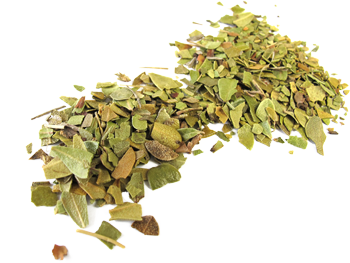חלק הצמח | איכויות | רכיבים פעילים | התוויות | מינונים | רגישות | תופעות לוואי |
מינון יתר | אזהרות | התוויות נגד | רעילות | אינטראקציות | הריון | הנקה
הצמח נקרא כך (uva ursi = ענבי דוב), כיוון שדובים אוכלים את פירותיו.
ענבי דוב הוא שיח קטן רב-שנתי, בעל פירות אדומים. מוצאו במערב צפון אמריקה.
בישראל, משרד הבריאות מגביל את השימוש בעלים של ענבי דוב, והם מותרים לשיווק בבתי מרקחת בלבד.

חלק הצמח בשימוש
עלים
איכויות
טמפרטורה: קר
לחות: יבש
טעם: מר
רכיבים פעילים עיקריים
פנולים פשוטים (arbutin), טאנינים, פלבונואידים, טריטרפנים.
התוויות
דלקות בדרכי השתן, שלשול.
מינונים
תמצית נוזלית בריכוז 1:3, 45% אלכוהול – 5-10 מ”ל ביום.
תמצית יבשה תקנית בריכוז של 20% ארבוטין – 450-900 מ"ג ביום.
חליטה – 3-12 גרם ביום.
בפורמולה – 25%-30%.
רגישות
לא ידוע על רגישות מיוחדת לענבי דוב.
תופעות לוואי ומינון יתר
תופעות לוואי למידע השלם למנויים
אזהרות וצעדי מנע
משך נטילה - למידע השלם למנויים
מחלות במערכת העיכול - למידע השלם למנויים
דלקות וכיבים - למידע השלם למנויים
עצירות וחוסרים תזונתיים - למידע השלם למנויים
הפרדת נטילה - למידע השלם למנויים
התוויות נגד
ענבי דוב אסורים לשימוש בילדים מתחת לגיל למידע השלם למנויים
רעילות
ענבי דוב מכילים חומר בשם למידע השלם למנויים
מדד רעילותLD50: למידע השלם למנויים
תגובות הדדיות עם תרופות / צמחי מרפא / תוספי תזונה
תרופות משתנות – למידע השלם למנויים
ליתיום – למידע השלם למנויים
תרופות ומזונות בעלי השפעה על חומציות השתן – למידע השלם למנויים
קורטיקוסטרואידים – למידע השלם למנויים
אנטיביוטיקה (β Lactam) – למידע השלם למנויים
הריון
ענבי דוב אסורים לשימוש בהריון(9-10,12).
הנקה
ענבי דוב אסורים לשימוש בהנקה(9-10).
מקורות
- Newall CA, Anderson LA, Philpson JD. Herbal Medicine: A Guide for Healthcare Professionals. London, UK: The Pharmaceutical Press, 1996.
- Blumenthal, et al. Herbal Medicine, Expanded Commission E Monographs. Austin: American Botanical Council; 2000.
- Gruenwald J, Brendler T, Jaenicke C. PDR for Herbal Medicines. 1st ed. Montvale, NJ: Medical Economics Company, Inc., 1998.
- Tyler VE. The honest herbal : a sensible guide to the use of herbs and related remedies. New York: Pharmaceutical Products Press, 1992:xviii, 375.
- Standardzulassung für Fertigarzneimittel. Pharmazeutischer Verlag, Deutscher Apotheker, Frankfurt/Main, 1987/89, Verlag.
- Stübler M, Krug E. Leesers Lehrbuch der Homöopathie, Pflanzliche Arzneistoffe II. Heidelberg: Haug-Verlag; 1988. pp. 403–406.
- Smith, Hugh O. "Mycoplasmas: The Unsuspected Invader." Better Nutrition. Feb 2000, Vol. 62, Issue 2, p.30.
- Schulz V, Hansel R, Tyler VE. Rational Phytotherapy: A Physician's Guide to Herbal Medicine. Terry C. Telger, transl. 3rd ed. Berlin, GER: Springer, 1998.
- Mills. S, Bone K, The Essential Guide to Herbal Safety. Churchill Livingstone, 2005
- Brinker F. Herb Contraindications and Drug Interactions, 3rd ed. Sandy (OR): Eclectic Medical Publications; 2001
- Hurrell RF, Reddy M, Cook JD. Inhibition of non-haem iron absorption in man by polyphenolic-containing beverages. Br. J. Nutr., 81:289-295, 1999
- McGuffin M, Hobbs C, Upton R, Goldberg A (eds). American Herbal Products Association’s Botanical Safety Handbook. Boca Raton, FL: CRC Press, 1997
- Frohne VD. The urinary disinfectant effect of extract from leaves uva ursi [in German; English abstract]. Planta Med. 1970;18:1-25.
- Nowak AK, Shilkin KB, Jeffrey GP. Darkroom hepatitis after exposure to hydroquinone. Lancet 1995; 345:1187.
- Peters MM, Jones TW, Monks TJ, Lau SS. Cytotoxicity and cell-proliferation induced by the nephrocarcinogen hydroquinone and its nephrotoxic metabolite 2,3,5-(tris-glutathion-Syl ) hydroquinone. Carcinogenesis 1997; 18:2393-401.
- Agency UEP. Extremely hazardous subtances. Superfund Chemical Profiles. Park Ridge, New Jersey: Noyes Data Corporation, 1988:859-63.
- Anonymous. Uva Ursi. Vol. July: Facts and Comparisons: The Review of Natural Products, 1997.
- Anonymous. Monographs on the medicinal uses of plants. Exeter: European Scientific Cooperative on Phytotherapy, 1997.
- Fetrow, Charles W. and Avila, Juan R. Professional's Handbook of Complementary and Alternative Medicines. Springhouse Corporation: Springhouse, PA, 1999.
- PDR for herbal medicines, third edition, Thomson 2005.
- Wichtl M (ed.). Herbal Drugs and Phytopharmaceuticals. CRC Press, Boca Raton, 1994
- De Smet PAGM et al. (eds.). Adverse Effects of Herb Drugs 2. Springer-Verlag, Berlin, 1993
- Frohne D. Urinary disinfectant activity of bearberry leaf extracts. Planta Med., 18(1):1-25,1969
- Tyler V. Herbs of Choice. New York, NY: Pharmaceutical Products Press; 1994:79.
- Leung AY, Foster S. Encyclopedia of Common Natural Ingredients used in Food, Drugs, and Cosmetics. 2nd ed. New York, NY: Wiley; 1996:505.
- Kubo M, Ito M, Nakata H, et al. Pharmacological studies on leaf of Arctostapylos uva-ursi (L.) Spreng. I. Combined effect of 50% methanolic extract from Arctostaphylos uva-ursi (L.) Spreng. (bearberry leaf) and prednisolone on immuno-inflammation. [Japanese] Yakugaku Zasshi, 110(1):59-67, 1990 (Chem. Abs. 112:151442c)
- Matsuda H, Nakata H, Tanaka T, et al. [Pharmacological study on Arctostaphylos uva-ursi (L.) Spreng. II. Combined effects of arbutin and prednisolone or dexamethazone on immuno- inflammation]. Yakugaku Zasshi 1990;110(1):68-76.
- USDA Nutrient database for standard reference, Release 15, Agric. Res. Serv., SR15, 2002

דוגמא למונוגרף מלא
לרכישת מנוי |
כניסת מנויים

